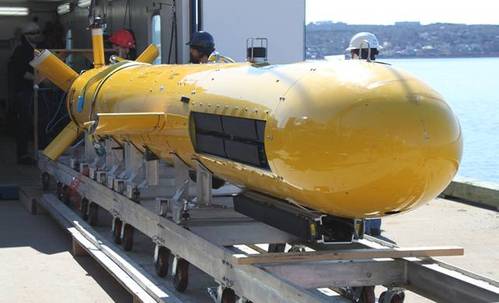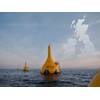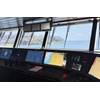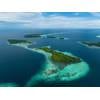Kraken Assists Search for 1845 Arctic Shipwreck
Kraken Sonar Systems Inc. announced its collaboration with numerous organizations, using advanced underwater technology, to locate the historic ships of the ill-fated 1845 Franklin Expedition.
For more than 150 years, Canadian Arctic voyages that venture out to discover the fate of the expedition have improved awareness of one of the most merciless environments. The 2014 Victoria Strait Expedition is the most ambitious to date, with more partners and sophisticated technologies than ever before, striving to achieve various strategic goals.
The use of multiple platforms has significant potential to increase the amount of Arctic seabed mapped this summer. Ice and weather conditions permitting, the team could exceed the scanned and mapped ocean floor of all previous expeditions.
Four ships will serve as the main platforms: the Canadian Coast Guard's CCGS Sir Wilfrid Laurier, the Royal Canadian Navy's HMCS Kingston, the Arctic Research Foundation's research vessel Martin Bergmann, and One Ocean Expeditions' One Ocean Voyager. Also, a number of additional vessels along with autonomous and remote-controlled underwater vehicles will be utilized.
These platforms, vessels and vehicles will enable the teams to deploy high-resolution sonar technologies in a carefully choreographed effort to survey and map the seabed while searching for evidence of Franklin's lost ships.
Defence Research and Development Canada (DRDC), an agency of the Department of National Defence, is involved in some technologies that will be used in the expedition. The Arctic Explorer, for example, is an Autonomous Underwater Vehicle (AUV) made by International Submarine Engineering Ltd, and equipped with an ultra high-resolution AquaPix Interferometric Synthetic Aperture Sonar (INSAS) produced by Kraken. This year, DRDC will conduct a series of experiments on the performance of sonar imaging technologies in extremely low water temperatures.
Kraken’s AquaPix INSAS generates seabed images with unprecedented image resolution and detail. The system is capable of providing seabed imagery with target detection resolutions better than 3cm out to a range of greater than 250m per side of an underwater vehicle. It also simultaneously produces 3D bathymetric data with bin resolutions better than 10cm x 10cm and depth accuracy in compliance with IHO special order requirements.
INSAS offers high resolution imagery at longer ranges than conventional side-scan sonar. This is done by replacing traditional sonar hardware with sophisticated signal processing software. The receive transducer array of INSAS is “synthesized” in software by the coherent recombination of many sonar pings overlapping an area of interest.
Karl Kenny, Kraken President/CEO said, “We’re honored to be participating in the 2014 Victoria Strait Expedition. Pardon the pun, but we think it’s extremely cool for our AquaPix sonar technology to be deployed in this year’s Arctic expedition. In addition to searching for Franklin’s ships, we will be working closing with DRDC personnel to further the development of AUV/SAS techniques to enable rapid seabed mapping and 3D imaging of the seafloor in harsh environments.”















 August 2025
August 2025



